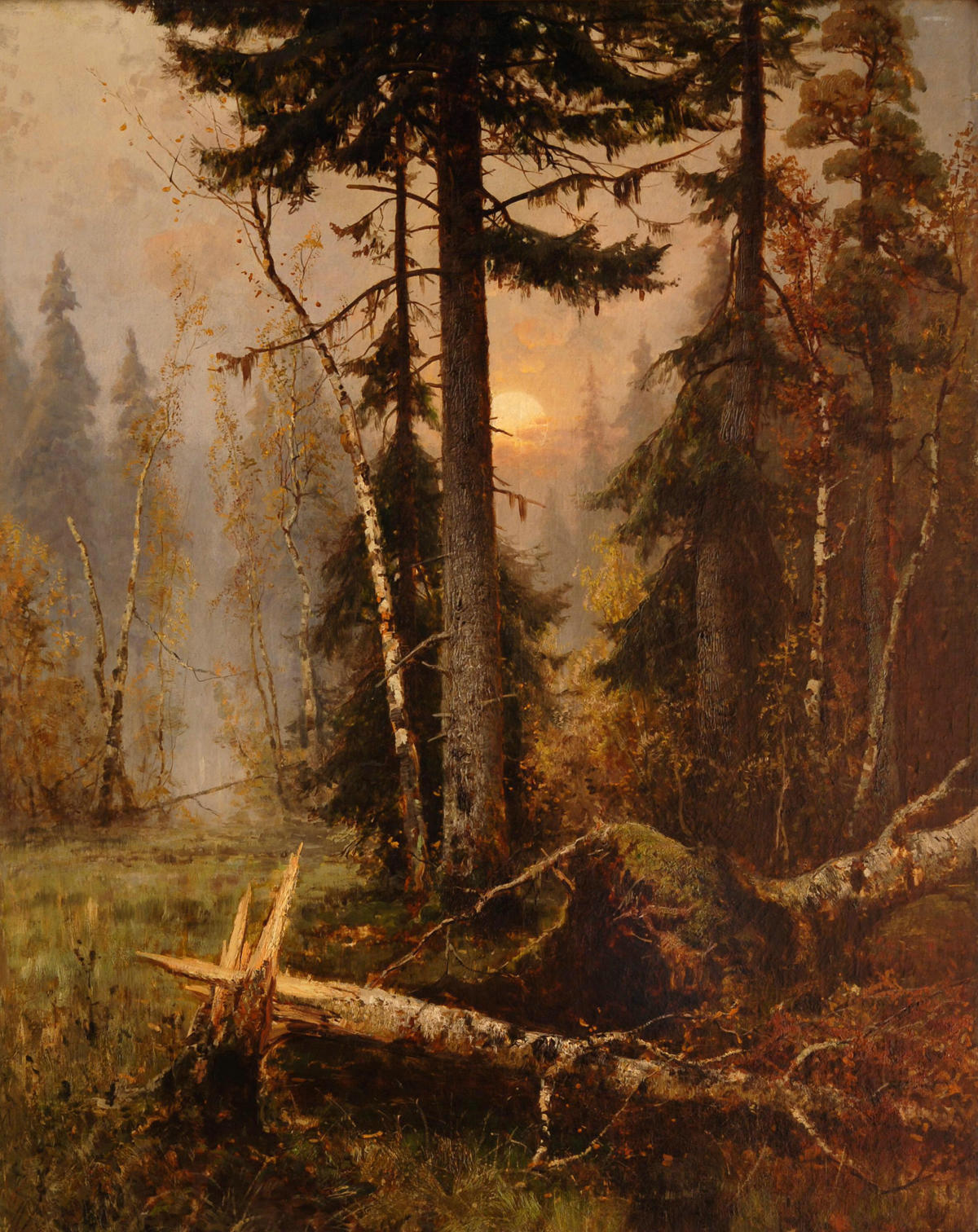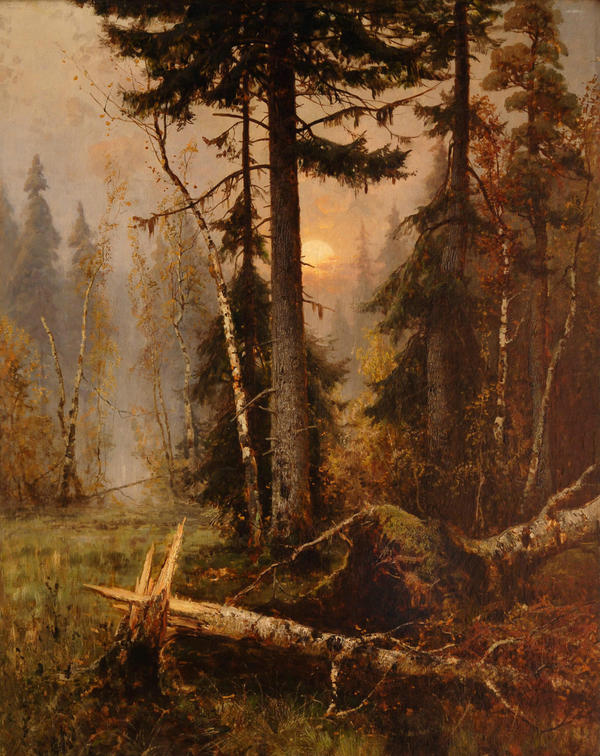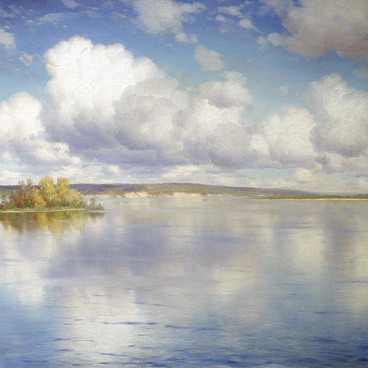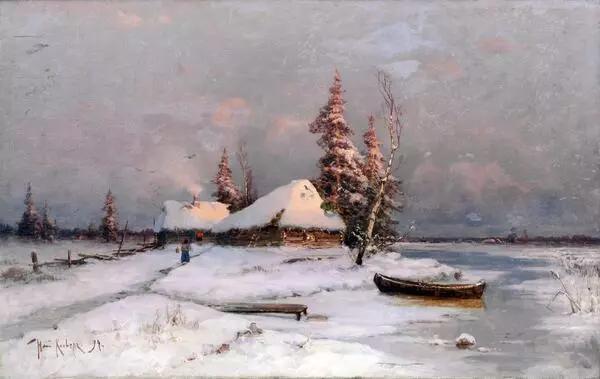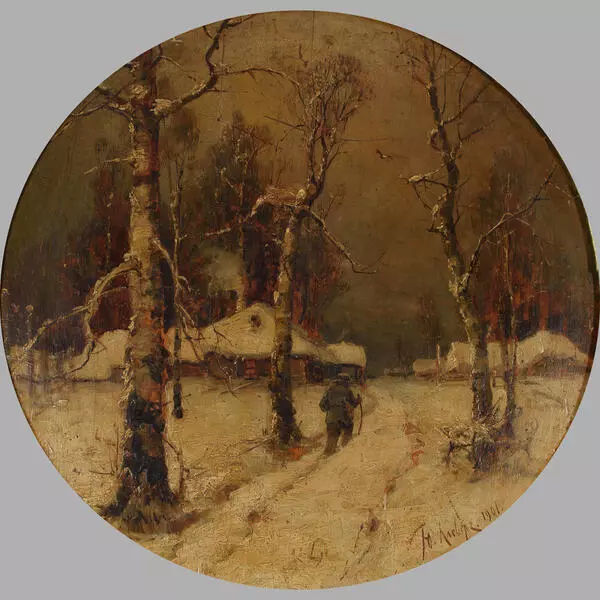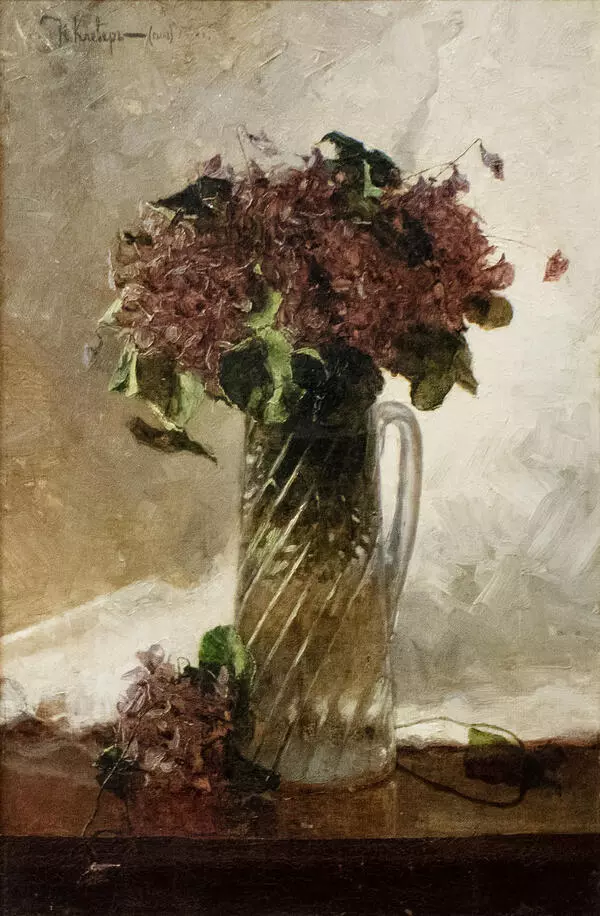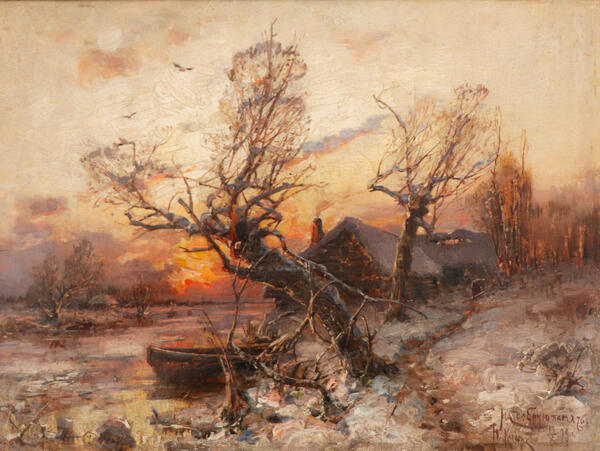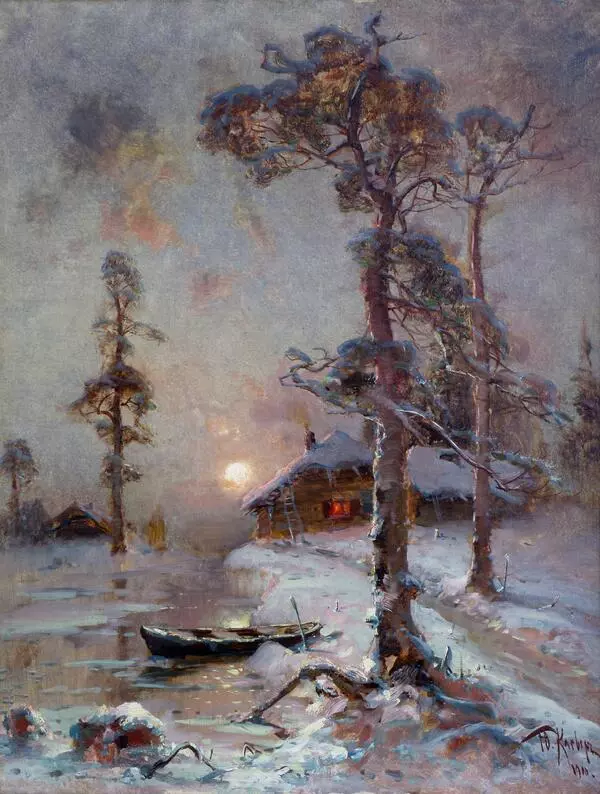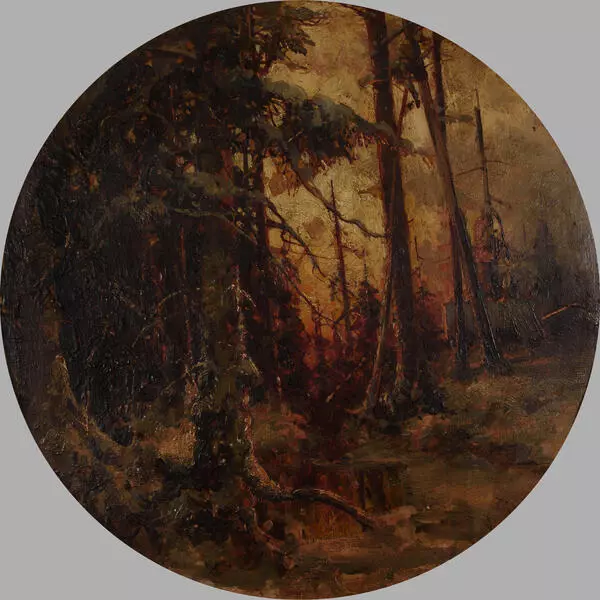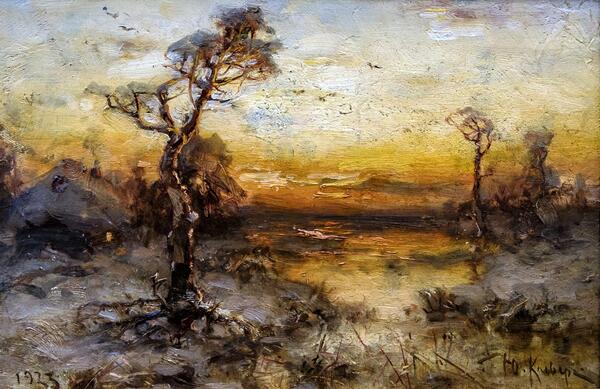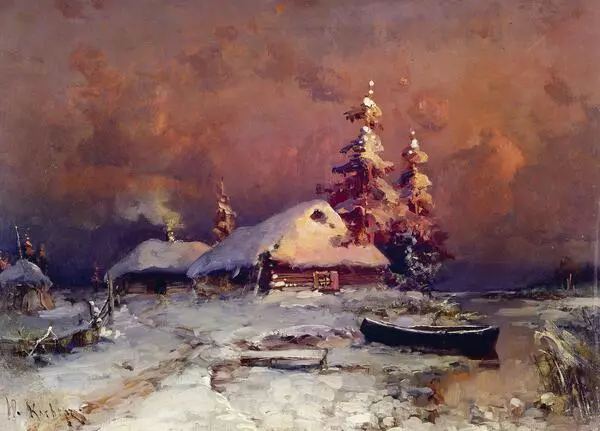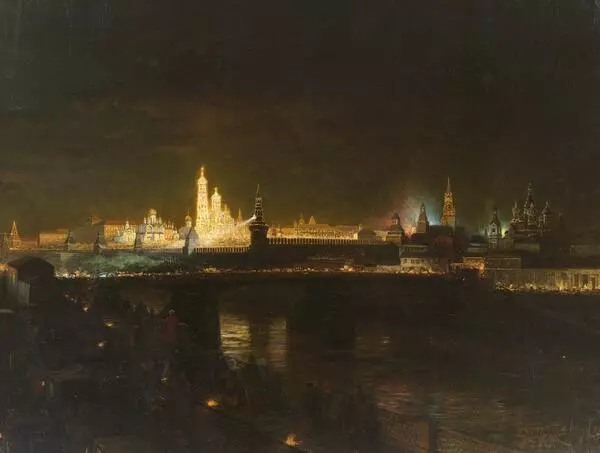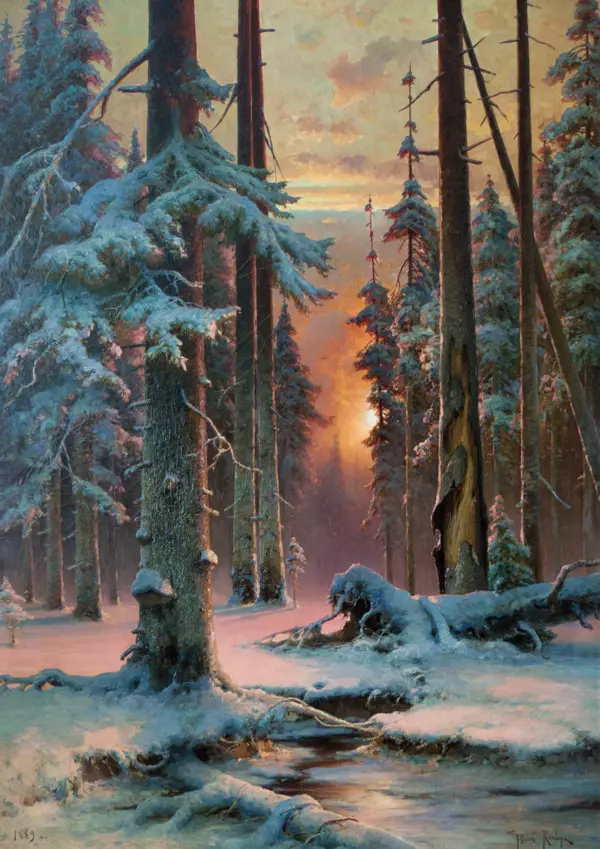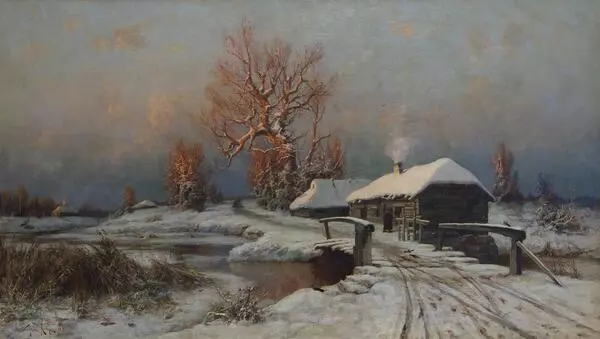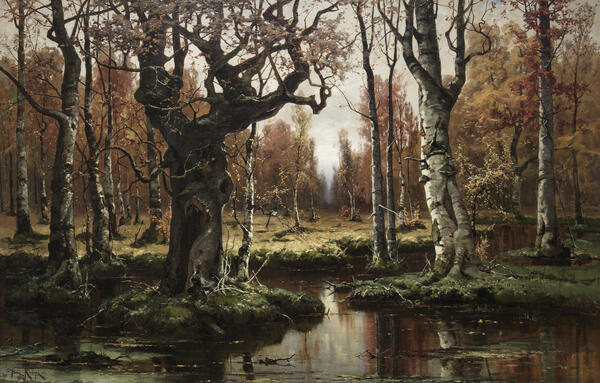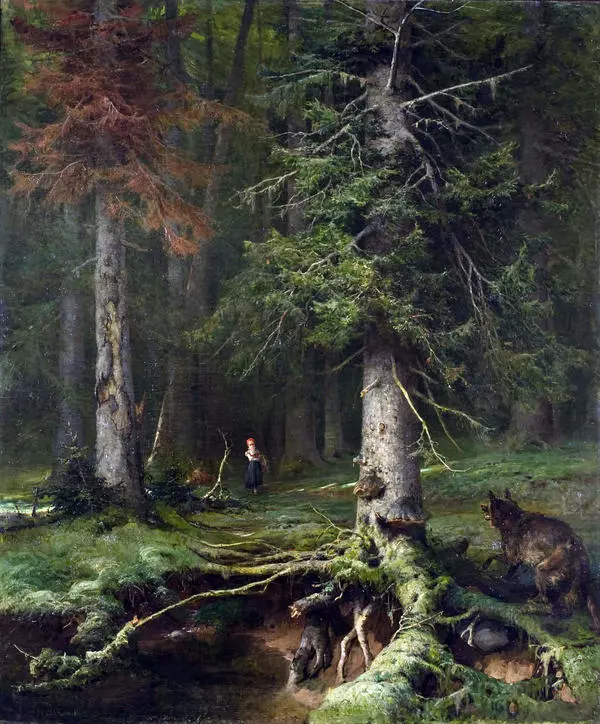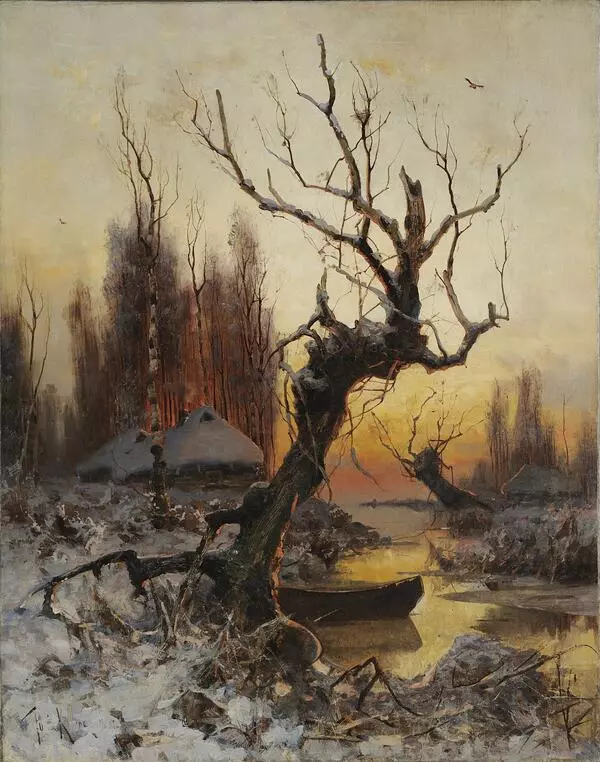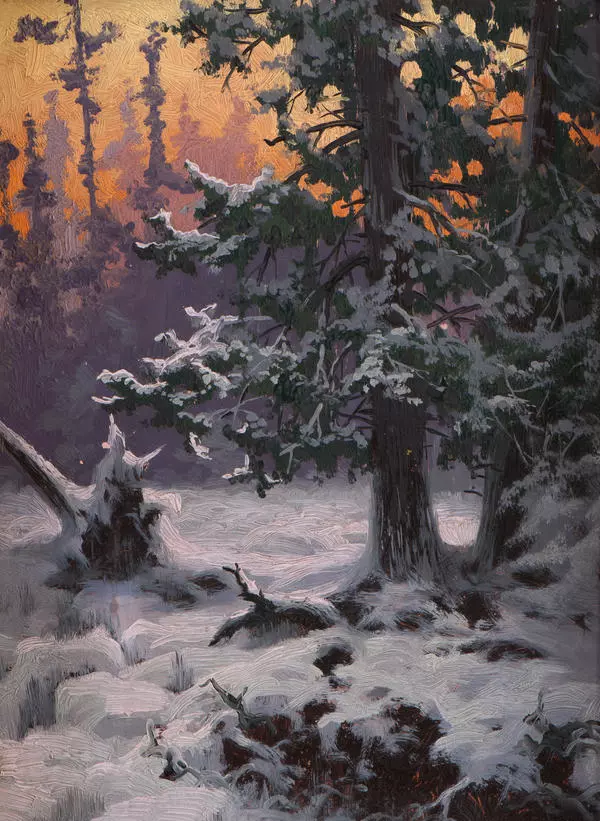Julius Klever was a recognized master of romantic landscapes. His paintings were not heavy and over-saturated, despite the fact that the artist realistically depicted all the details of the trees trunks and crowns. The recognizable manner of Klever’s style with chequered light and shade and colour hues “enlivened” his paintings, making them easy and fascinating for the audience.
Thus, the “Wilderness” canvas presented in the exposition is permeated with light. The background of the painting is translucent, as if shrouded in a light haze, through which the sun rays are refracted, coloring the clouds and the trees in warm shades. This reddish light is “supported” by the birch leaves and the earth, which can be seen at the roots of the fallen trunk.
The setting sun and the bizarre trees were Klever’s hallmark. The painter said: ‘I paint all sorts of landscapes, but I really know the sunset in its various moments and the stunted trees, curved by the bad weather and the winds. I have spent a lot of time studying the colours of sunsets, the variety of evening illumination of the sky and the objects of nature. I can paint such a picture at any time and under any circumstances.’
Klever was a talented and incredibly hardworking artist. He entered the Imperial Academy of Fine Arts in 1867, and held his first personal exhibition already in 1874. Although Klever did not complete a full course at the Academy, his student works were awarded small and large silver medals. Already at the age of 28, he became an academician, and aged 31 he became a full professor. But he was not looking for his signature style in the classrooms, but in the open air. He traveled extensively around Russia, visited Riga and the Crimea, and would return to St. Petersburg only for a while to relax and gain strength to create new works of art.
Julius Klever’s works quickly became popular not only among the academic community, but with the general public as well. The contemporaries recollected that his paintings were hanging in every “decent” house, and several of his works, such as “The Forest in Winter”, were acquired even by the tsar family. At the end of the XIX century, Klever was commissioned to do so many paintings, that he had to hire an entire workshop of assistants in order to meet the deadlines. The artist instructed the apprentices to draw an intermediate layer of paintings on top of his sketches, in which he defined the composition and the key colour solutions. After that, the painter personally completed important details and signed the canvases.
The famous art critic Alexandre Benoit wrote in the autobiography: “Klever”s paintings seemed illusory to such an extent that true scandals occurred at the exhibitions, the visitors climbed through the partition to look behind the canvas and make sure that there is no trick under this miracle, to see that the picture is not illuminated from behind by some transaparency. Others poked into the canvas, stroked it, and such insolent people had to be taken out by force with the help of the police.”
Thus, the “Wilderness” canvas presented in the exposition is permeated with light. The background of the painting is translucent, as if shrouded in a light haze, through which the sun rays are refracted, coloring the clouds and the trees in warm shades. This reddish light is “supported” by the birch leaves and the earth, which can be seen at the roots of the fallen trunk.
The setting sun and the bizarre trees were Klever’s hallmark. The painter said: ‘I paint all sorts of landscapes, but I really know the sunset in its various moments and the stunted trees, curved by the bad weather and the winds. I have spent a lot of time studying the colours of sunsets, the variety of evening illumination of the sky and the objects of nature. I can paint such a picture at any time and under any circumstances.’
Klever was a talented and incredibly hardworking artist. He entered the Imperial Academy of Fine Arts in 1867, and held his first personal exhibition already in 1874. Although Klever did not complete a full course at the Academy, his student works were awarded small and large silver medals. Already at the age of 28, he became an academician, and aged 31 he became a full professor. But he was not looking for his signature style in the classrooms, but in the open air. He traveled extensively around Russia, visited Riga and the Crimea, and would return to St. Petersburg only for a while to relax and gain strength to create new works of art.
Julius Klever’s works quickly became popular not only among the academic community, but with the general public as well. The contemporaries recollected that his paintings were hanging in every “decent” house, and several of his works, such as “The Forest in Winter”, were acquired even by the tsar family. At the end of the XIX century, Klever was commissioned to do so many paintings, that he had to hire an entire workshop of assistants in order to meet the deadlines. The artist instructed the apprentices to draw an intermediate layer of paintings on top of his sketches, in which he defined the composition and the key colour solutions. After that, the painter personally completed important details and signed the canvases.
The famous art critic Alexandre Benoit wrote in the autobiography: “Klever”s paintings seemed illusory to such an extent that true scandals occurred at the exhibitions, the visitors climbed through the partition to look behind the canvas and make sure that there is no trick under this miracle, to see that the picture is not illuminated from behind by some transaparency. Others poked into the canvas, stroked it, and such insolent people had to be taken out by force with the help of the police.”
